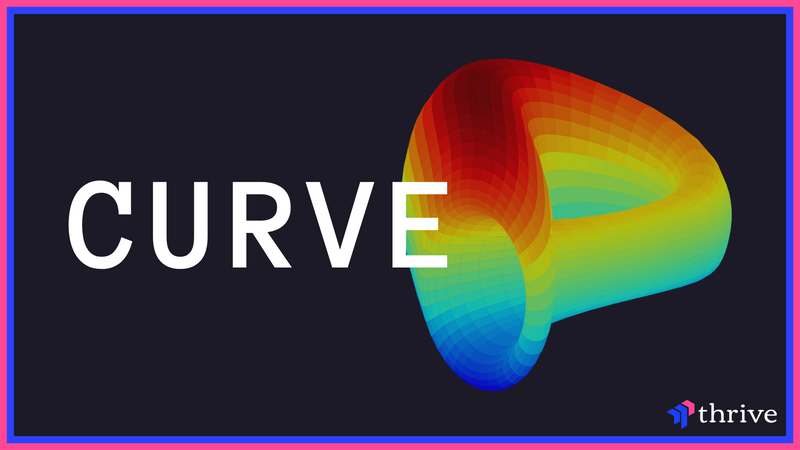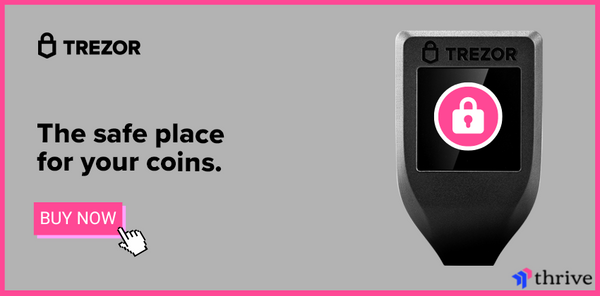Curve Finance: CRV + Liquidity

Curve Finance
Table of Contents
1. What is Curve Finance and how does it work?2. How does Curve Finance ensure the security of my funds?
3. What types of cryptocurrencies does Curve Finance support?
4. Is there a limit on how much I can deposit or withdraw from Curve Finance?
5. What fees does Curve Finance charge for its services?
6. How does Curve Finance's liquidity pool work and how can I benefit from it?
7. What is the difference between Curve Finance and other decentralized exchanges?
8. How to set up an account with Curve Finance?
9. An overview on CRV

What is Curve Finance and how does it work?
Curve Finance is a decentralized exchange (DEX) built on the Ethereum blockchain that allows users to trade different types of stablecoins with low slippage and high liquidity. It utilizes a unique liquidity pool design that allows users to trade with minimal price impact, even when trading large amounts.The platform uses a dynamic pool of liquidity that is constantly adjusting to changes in supply and demand, this allows users to trade at the best possible price. Curve also allows users to earn interest on their deposited stablecoins by providing liquidity to the platform.
Curve also has a token called CRV that is used for governance. Holders of CRV can vote on changes to the platform and also earn a share of the transaction fees generated by the platform.
In summary, Curve is a decentralized exchange which utilizes a liquidity pool and a governance token to provide users with low-slippage, high-liquidity stablecoin trading and also incentivizes users to provide liquidity to the platform through earning interest on deposited stablecoins and earning a share of transaction fees.
How does Curve Finance ensure the security of my funds?
Curve Finance takes the security of users' funds very seriously. They use a number of measures to ensure that funds are safe and secure on the platform.First and foremost, Curve is built on the Ethereum blockchain, which is a decentralized and transparent network. This means that there is no central point of control or failure, making it difficult for hackers to target and steal funds.
Secondly, Curve uses smart contracts to facilitate trades on the platform. Smart contracts are self-executing contracts with the terms of the agreement directly written into code. This ensures that trades are executed automatically and transparently, and that funds are released only when the terms of the contract are met.
Curve has implemented a number of security features such as two-factor authentication and support for hardware wallets, which help users to secure their accounts and protect their funds.
Finally, Curve has a bug bounty program that encourages security researchers and white hat hackers to find and report vulnerabilities in the platform. This allows the team to fix and address potential security issues in a timely manner.
All these measures are in place to ensure the security of user's funds and to protect them from any potential vulnerabilities or breaches.
READ MORE: A Beginner's Guide to UniSwap
What types of cryptocurrencies does Curve Finance support?
Curve Finance primarily supports stablecoins, which are a type of cryptocurrency that are pegged to the value of a real-world asset, like the US dollar. This means that the value of these coins is less volatile compared to other cryptocurrencies like Bitcoin or Ethereum.Currently, Curve supports a variety of stablecoins such as USDC, DAI, USDT, sUSDT, and more. They also support other types of cryptocurrencies like ETH and BTC.
The platform is always adding new tokens and coins to its list of supported assets, and they are continuously working on adding more.
It's worth noting that the list of supported assets can change over time and could be influenced by market demand, liquidity, and regulatory compliance, so it's always best to check the list of supported assets on the official website.
Is there a limit on how much I can deposit or withdraw from Curve Finance?
There are limits to how much you can deposit or withdraw from Curve Finance, but these limits are designed to be quite high, so most users will not have to worry about them.For deposits, there is typically no minimum deposit amount, so you can deposit as little or as much as you like. However, there may be a maximum deposit limit that depends on the asset you are depositing.
For withdrawals, the limits are also generally quite high. There is typically a minimum withdrawal amount, but it's usually set at a low level, and you can withdraw as much as you like, as long as you have that amount available in your account.
It's worth noting that these limits can change over time, and they may be influenced by market conditions, regulatory requirements, or other factors. It's always best to check the current deposit and withdrawal limits on the official website or by contacting the support team.
In general, there are deposit and withdrawal limits on Curve, but they are high enough to accommodate most users' needs.
What fees does Curve Finance charge for its services?
Curve Finance charges a small fee for its trading services, similar to other decentralized exchanges. The fees are usually a small percentage of the total trade value and it's used to pay for the cost of running the platform, such as the cost of maintaining the liquidity pools, and also to reward liquidity providers.The trading fee on Curve is dynamic and it's based on the liquidity of the assets being traded. The higher the liquidity, the lower the fee, and vice versa.
For providing liquidity to the platform, users will earn a share of the trading fees, and also receive a percentage of the platform's token, CRV.
It's worth noting that the fees may change over time and could be influenced by market conditions, regulatory requirements, or other factors. It's always best to check the current fee schedule on the official website or by contacting the support team.
How does Curve Finance's liquidity pool work and how can I benefit from it?
Curve Finance's liquidity pool is a system that allows users to trade different types of stablecoins with minimal price impact. The pool is essentially a collection of funds that users can deposit into, and these funds are then used to facilitate trades on the platform.When you provide liquidity to the pool by depositing stablecoins, you become a liquidity provider. As a liquidity provider, you earn a share of the trading fees generated by the platform as well as a percentage of the platform's token, CRV.
By providing liquidity, you can earn a passive income from the trading fees generated on the platform, and also from the appreciation of the CRV token.
The process of adding liquidity is quite simple, you just need to deposit your stablecoins into the pool, and then you can withdraw them at any time, along with any earned rewards.
It's worth noting that the rewards earned by liquidity providers are proportionate to the amount of liquidity they provide to the pool, so the more liquidity you provide, the higher the rewards will be.
What is the difference between Curve Finance and other decentralized exchanges?
Curve Finance is a decentralized exchange, similar to other decentralized exchanges, but it has some unique features that set it apart.
One of the main differences between Curve and other decentralized exchanges is its liquidity pool. The pool is designed to minimize the impact of trading on the price of stablecoins, this means that users can trade large amounts of stablecoins with minimal slippage, even when the market is volatile. This is a big advantage over other DEXs that may experience larger price impacts and slippage, especially during high-volatility market conditions.
Another difference is the focus on stablecoins. While other DEXs may support a wide range of cryptocurrencies, Curve is primarily focused on stablecoins, which are less volatile and can be used for more stable and predictable trading.
Curve also has a governance token, CRV, that allows users to vote on changes to the platform and also earn a share of the transaction fees generated by the platform. This incentivizes users to hold and use the token, and also allows the platform to evolve and adapt to the market demand.
READ MORE: AAVE: Open-Source Liquidity
How to set up an account with Curve Finance?
Setting up an account with Curve Finance is a relatively straightforward process. Here are the basic steps:Go to the official website of Curve Finance and click on the "Connect Wallet" button.
Connect your Ethereum wallet to the platform. You can use a variety of wallets such as MetaMask, Ledger, or Trezor.
Once your wallet is connected, you'll be able to view your account details and deposit stablecoins into the platform.
To deposit stablecoins, click on the "Deposit" button, select the stablecoin you want to deposit and confirm the transaction through your connected wallet.
Once your deposit is confirmed, you can start trading stablecoins on the platform.
To trade, select the pair you want to trade and enter the amount you want to trade, then confirm the transaction through your connected wallet.
It's important to keep in mind that you need to have some Ether (ETH) in your connected wallet to pay for the gas fees of the transactions on the Ethereum network.
To conclude, it's recommended that you enable two-factor authentication (2FA) for added security and also to check the deposit and withdrawal limits before making any transactions.
An overview on CRV
CRV is the governance token of Curve Finance, a decentralized exchange that allows users to trade different types of stablecoins with low slippage and high liquidity. The token is used to govern the platform, by allowing holders to vote on changes to the platform and also earn a share of the transaction fees generated by the platform.
Holders of CRV tokens can participate in decision-making on the platform, such as proposing new features, changing the platform's fee structure, and other important decisions. The token also grants its holders economic incentives, such as a share of the transaction fees and an allocation of newly minted tokens.
CRV tokens can be earned by providing liquidity to the platform, as well as by participating in liquidity mining pools or by buying them on decentralized exchanges.
In summary, CRV is the governance token of Curve Finance, it's used to govern the platform, by allowing holders to vote on changes to the platform and also earn a share of the transaction fees generated by the platform. CRV tokens can be earned by providing liquidity to the platform, participating in liquidity mining pools or by buying them on decentralized exchanges. Additionally, CRV token can be staked in the liquidity pools in order to earn a share of the transaction fees.
READ MORE: Decentralized Autonomous Organizations



